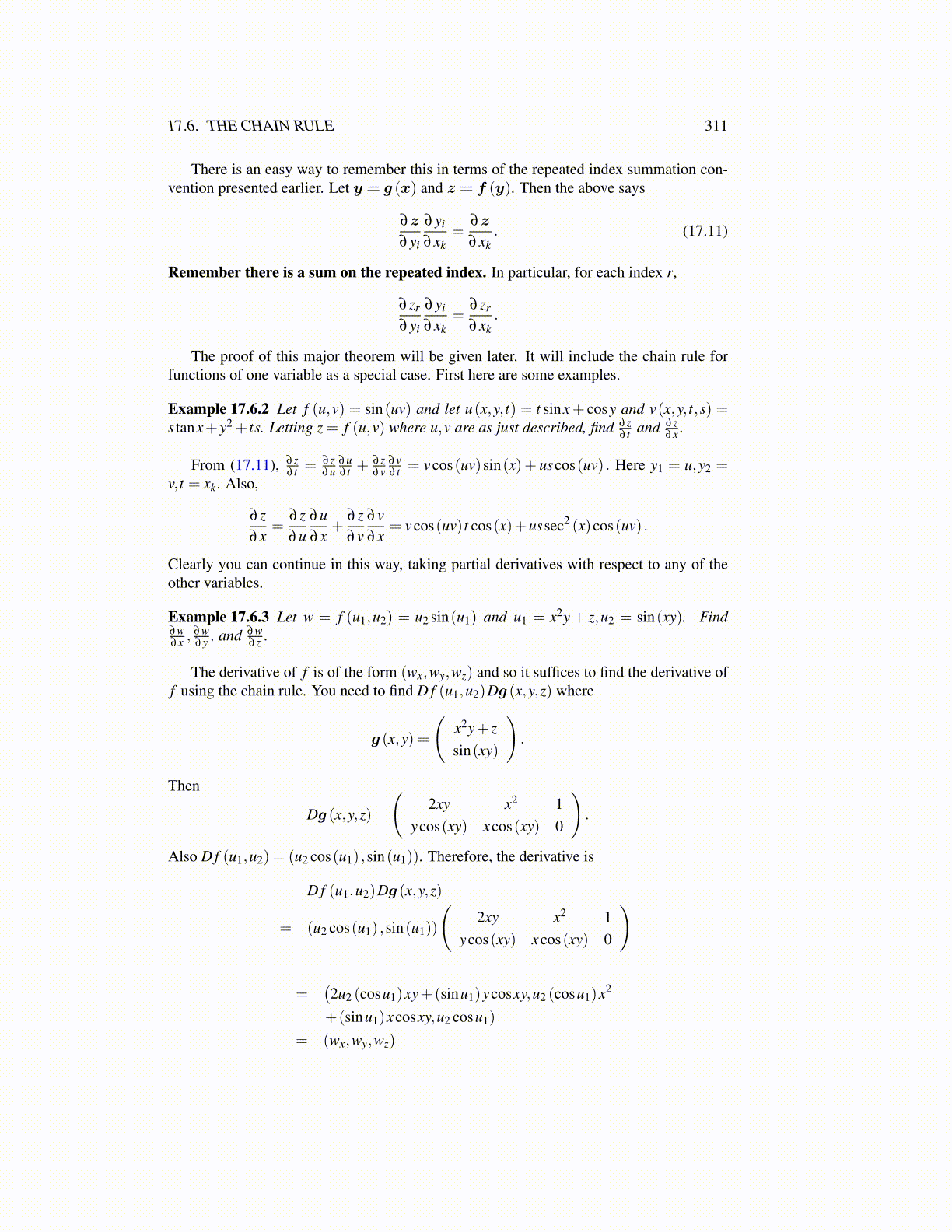
17.6. THE CHAIN RULE 311
There is an easy way to remember this in terms of the repeated index summation con-vention presented earlier. Let y = g (x) and z = f (y). Then the above says
∂z
∂yi
∂yi
∂xk=
∂z
∂xk. (17.11)
Remember there is a sum on the repeated index. In particular, for each index r,
∂ zr
∂yi
∂yi
∂xk=
∂ zr
∂xk.
The proof of this major theorem will be given later. It will include the chain rule forfunctions of one variable as a special case. First here are some examples.
Example 17.6.2 Let f (u,v) = sin(uv) and let u(x,y, t) = t sinx+ cosy and v(x,y, t,s) =s tanx+ y2 + ts. Letting z = f (u,v) where u,v are as just described, find ∂ z
∂ t and ∂ z∂x .
From (17.11), ∂ z∂ t = ∂ z
∂u∂u∂ t +
∂ z∂v
∂v∂ t = vcos(uv)sin(x)+ uscos(uv) . Here y1 = u,y2 =
v, t = xk. Also,
∂ z∂x
=∂ z∂u
∂u∂x
+∂ z∂v
∂v∂x
= vcos(uv) t cos(x)+ussec2 (x)cos(uv) .
Clearly you can continue in this way, taking partial derivatives with respect to any of theother variables.
Example 17.6.3 Let w = f (u1,u2) = u2 sin(u1) and u1 = x2y + z,u2 = sin(xy). Find∂w∂x ,
∂w∂y , and ∂w
∂ z .
The derivative of f is of the form (wx,wy,wz) and so it suffices to find the derivative off using the chain rule. You need to find D f (u1,u2)Dg (x,y,z) where
g (x,y) =
(x2y+ zsin(xy)
).
Then
Dg (x,y,z) =
(2xy x2 1
ycos(xy) xcos(xy) 0
).
Also D f (u1,u2) = (u2 cos(u1) ,sin(u1)). Therefore, the derivative is
D f (u1,u2)Dg (x,y,z)
= (u2 cos(u1) ,sin(u1))
(2xy x2 1
ycos(xy) xcos(xy) 0
)
=(2u2 (cosu1)xy+(sinu1)ycosxy,u2 (cosu1)x2
+(sinu1)xcosxy,u2 cosu1)
= (wx,wy,wz)